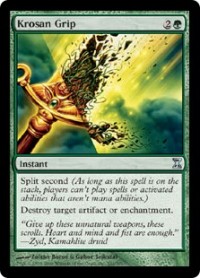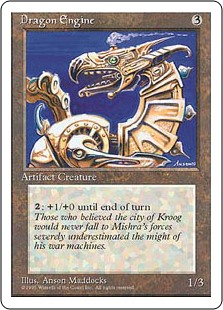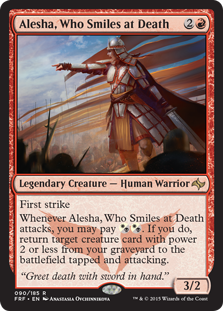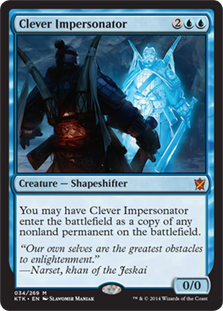Milestones are an important aspect to everyday life. They represent key moments to individuals and groups that bear attention in some fashion. Whether it’s meritorious exploits or simply reaching a notable achievement over a particular period of time, milestones are a means of indicating that you’ve reached a particular threshold of some particular journey. From important business objectives to anniversaries and graduations, we’ve all shared with, and shared in, milestone events with those around us. They are usually cause for celebration and serve as a worthwhile day-to-day recognition for a job well done.
In times such as these, milestones can also act as a reminder of normalcy – for which it’s fairly apparent are are all desperately craving more of right now.
These two factors converge here today. On the one hand, we are now in week fourteen of Monday Magic: COVID Edition – a period for this article series in which, due to my inability to physically play Magic with my game groups, I have mostly suspended the normal process of talking about a specific topic before seguing in to the showcase of an EDH card and instead have simply opted to just share some cards I’d personally love to use in a Commander deck but haven’t yet for one reason or another. The rationale behind this deviation has (and continues to be) that in a time of great unease and unrest, it would feel disingenuous to act as if nothing was happening outside of the game itself. Yet while the trappings around it have been temporarily halted, the card showcase continued all the same.
On the other hand, this particular post marks the 300 individual showcase piece I’ve done for this series, marking it as too significant of moment to simply let us pass it by without so much as an acknowledgement.
Nor should we, frankly. Doing any 300 of anything of a non-repetitive nature is kind of a big deal. Even something as inconsequential as a weekly article series on one specific format for one specific game among thousands.

Started it all
But that also means 300 weeks of creating content on a very single topic. That’s over 6 years alone focusing on a highly specific angle of the game, using the exact same criteria that was set down in the very first spotlight article all those years ago.
That’s 300 unique cards carefully cultivated and balanced across type, color, and ease of access. 300 different cards that all accentuate the casual spirit that Commander embodies – a spirit that is seen more so in it than nearly any other form of Magic out there. 300 cards that aren’t the deservedly-maligned “staples”; 300 cards that don’t cost more than $5 to obtain; 300 cards that you maybe hadn’t considered using in EDH before – if you had heard of the card at all.
And that doesn’t even include the various articles posted over the years outside of that mold, from supplemental set reviews, to what not to do in EDH, to a defense of color hosers, to an extensive walk through my lengthy and convoluted Commander deck construction process.
So, yes, while the bulk of the series is akin to Matryoshka dolls in terms of its content scope, it’s still something I find myself adamant about even after all this time. And I agree that deserves some celebration – especially in the here and now.
More to the point though, this particular achievement has reminded me once again that despite never being all that hardcore about aggressive or min-max style deck building philosophies, tournament play, specialty products, or even wading all that much into the larger community overall, Magic: the Gathering has nevertheless played an outsized role for much of my life:
 When I started playing during Antiquities, Magic was a way that I was able to hang out with my older brothers and their friends, opening up a whole new world of board gaming possibilities beyond the handful of perennial childhood classics.
When I started playing during Antiquities, Magic was a way that I was able to hang out with my older brothers and their friends, opening up a whole new world of board gaming possibilities beyond the handful of perennial childhood classics.- Several years later it served the same purpose but in reverse, providing the means for my younger siblings and I to bond over a common interest.
- In middle school, Magic was the vehicle by which my friends and I were able to convince them to start an extracurricular board game club – during school hours – and encourage other kids to play games they may not have heard of at the time.
- After moving to an entirely new school system my sophomore year of high school, I was able to bond (relatively) quickly with a new group of friends thanks to them not only them playing the game but also enjoying it with the same casual philosophy.
- For over 10 years our game group held court weekly at a local pizza shop where we cultivated an environment where new players felt welcome, where we had a reputation for large group games that often went past closing time, and where we outlasted every staff member in the place.
- I started hanging out with my future wife under the pretext of her wanting to learn how to play the game.
- The many, many years playing of multiplayer Magic has allowed me to hone my aptitude for long-term strategic goals, contingency planning, tactical thinking, and a deep appreciation for other games with well-written rules.
Corny though it may be, all of these events have left a positive impact on me in some way, from being able to routinely flex cognitive skillsets to heavily shaping many of my relationships over the last 26 years. And although I don’t put extensive thought into that fact, it’s only fair to give credit where credit is due.
That all being said, this also means I’ve been present for the game itself undergoing extensive changes over that same time.
I was there for the Sixth Edition rule changes, the Magic 2010 rule changes, and the countless little tweaks it makes every year. I cringed at the original card template changes, raged at the introduction of mythic rares, and had a hard time processing the time Wizards caved to outside influences and banned demonic imagery for several years. I mildly lamented when mana burn was kicked out but celebrated when the batch system was given the heave. I’ve watched as broken cards nearly destroyed Standard itself at least twice.

I’ve seen the artwork styles simultaneously become more extensive and elaborate but also more homogeneous. I’ve enjoyed watching the game evolve over time to show better representation of minority characters and identities, as well as functional female armor. But I also know that such a process has been slower than many have wanted – to say nothing of the lingering problems among many in its player base.
I love the new ways the game experiments with mechanics and card ideas, but then throw my hands up when half the time the final product of those seemingly innovative concepts are watered down to a mere variation of something we’ve seen before in order to keep that march of ideas (and product) at an incremental pace.
Above all, I absolutely adore the way that Magic forged the idea of a customizable card game and through that opened up a host of tabletop game design inspirations over the subsequent decades – from a wide spectrum of CCGs originally to the rise of fixed asymmetric decks, ECGs, and the entire deckbuilder genre – at a minimum. But like most players past and present, I absolutely detest the amount of money you can find yourself spending on it if you aren’t careful.
Which is how we get to card showcase 300 today.
I thought about which card I should go with for this particular piece – whether it should simply be the next card on my curated list to choose from per usual or some oddball card I’ve been longing to but as of yet haven’t found a home for in a Commander deck, which has been the standard operation the last few weeks.
In the end, however, I opted for neither. Instead, this week’s card is one that both fulfills the promise of casualness and accessibility while also personally encapsulating a card that absolutely screams “this is my jam”.
Today we have: Clever Impersonator

Name: Clever Impersonator
Edition: Khans of Tarkir / Commander 2019
Rarity: Mythic Rare
Focus: Permanent Copying
Highlights: I am no evangelist, but the great military strategist Sun Tzu has many thoughts on warfare, some of which you’ve undoubtedly come across in everyday life. Among the many lessons imparted in his teachings, one common theme is finding ways of turning the situation you find yourself in to your advantage. Find ways to not blindly go into a conflict when you are clearly outmatched, and if possible, figure out a way of turning your opponent’s strengths into a weakness.
That last part ties into one of three instinctual pillars of both my deck building and gameplay behavior. First, be willing to bend but not break. Second, plan for as many contingencies as possible without sacrificing your offensive goals. Third, as is the case here, find a way to neutralize your enemy’s greatest assets. This could be anything from disrupting a card from getting used at all (countering, discarding, card removal, etc.), to nullifying the main crux of the deck’s agenda, to turning someone else’s advantage into your own – usually in the form of stealing or copying cards.
Ask anyone I’ve played with for an extensive period of time and they will tell you that steal and copy effects are among some of my personal favorites. Not in a ‘lockdown, denial, stop you from actually playing the game’ way that some Blue mages fixate on, but instead gaining an advantage by ensuring my deck benefits from your efforts.
This isn’t a new thing, clearly. One of my all-time favorite cards since the beginning of my Magic-going days has been Vesuvan Doppelganger: a fancy Clone that lets you morph into a new creature each turn if you want to. But Clever Impersonator does a heck of a job trying to unseat it as my favorite copy card.
For a staggeringly modest four mana, Clever Impersonator states that it enters the battlefield as a copy of any permanent other than lands (apologies to all those shapeshifters who really wanted to be a tree, apparently). Unlike a Clone, which costs the same mana, Clever Impersonator has much wider range of options. Artifacts. Enchantments. Planeswalkers. (Somehow that makes less sense than a tree but whatever). Whether your opponent’s most useful permanent is a scary creature, potent enchantment, or some other worthwhile trinket, with relative ease you now have access to your own copy of it – and likely at a much lower casting cost no less. Which likely will salt the wound a bit all the more.
In Commander, there is no shortage of expensive and powerful cards to choose from, and this card effectively lets you hold up a mirror to whichever one you find the most useful to you at the time – be it an accelerant to make your deck work better, a further obstacle for your mutual opponents to deal with, or establishing a detente with the original owner with you both now benefiting from the same effect or ability.
It also generates that mild head shake from your opponent the way only the best copy spells can. So that’s a nice bonus.
Useful on both offense, defense, and pretty much anywhere in between, there is almost never a time when Clever Impersonator is not a useful addition to a Commander deck. And it is very much my kind of card, as any milestone notable should be.
But if you’re up for it, I’m also giving you a chance to your own copy of this copy, if you so choose. Right…..now.
300th Showcase Celebration!
In honor of this accomplishment, and as an appreciation for reading them all these years, I’m raffling off a fitting $30 store credit to TCGPlayer.com as a means of giving back and let you get some all new (or old) cards for your own Commander decks. Over the next 20 days you have a chance to enter. Thanks, and good luck!
Keep an eye out for us to be regularly featuring other more accessible-but-worth-it Commander cards going forward. In the meantime, we’ll keep the light on for you.
![]()
You can discuss this article over on our social media!
